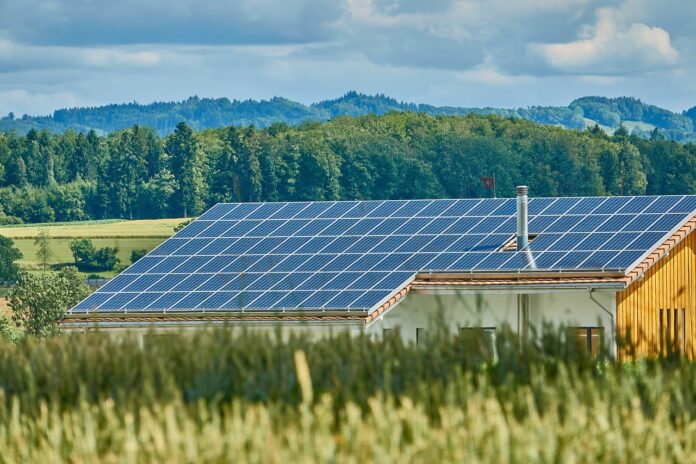Renewable energy has emerged as a critical solution to the global energy crisis and climate change. In rural landscapes, the potential for renewable energy is vast, with opportunities for wind, solar, biomass, and small-scale hydroelectric power generation. These areas often have abundant natural resources that can be harnessed to produce clean energy. However, rural communities also face unique challenges in adopting renewable energy technologies. The transition to renewables in these areas is not just about environmental sustainability but also about enhancing energy security, reducing energy poverty, and promoting local economic development.
Despite the potential benefits, the deployment of renewable energy in rural regions is slower compared to urban areas. This is due to a combination of factors, including geographical, infrastructural, and socio-economic challenges. Addressing these issues is crucial for ensuring that rural communities are not left behind in the global shift towards a more sustainable energy future.
Infrastructure and Technological Hurdles in Remote Locations
Rural areas often lack the necessary infrastructure to support large-scale renewable energy projects. The remoteness of these locations can make it difficult to transport materials and equipment needed for installation. Moreover, the existing electrical grid in many rural areas is outdated and not designed to accommodate the variable output from renewable sources. This can lead to technical challenges in maintaining a stable and reliable energy supply.
Technological hurdles also play a significant role. For instance, the intermittent nature of solar and wind energy requires advanced technologies for energy storage and management. In remote areas, access to such technologies is limited, and the high costs associated with them can be prohibitive. Additionally, the maintenance of renewable energy systems can be challenging due to the scarcity of technical expertise in rural regions.
Economic Barriers and Funding Gaps for Rural Renewable Projects
The initial investment required for renewable energy projects is often higher than traditional energy sources. This poses a significant barrier for rural communities, where financial resources are typically more constrained. Rural renewable projects frequently struggle to secure funding from banks and investors who may be hesitant to invest in perceived riskier ventures with uncertain returns.
Government subsidies and incentives play a crucial role in bridging the funding gap. However, rural areas often receive less attention and fewer resources than their urban counterparts. Without adequate financial support, the economic viability of renewable projects in rural settings is severely impacted, leading to missed opportunities for local development and job creation.
Skill Shortages and the Need for Local Training Programs
A skilled workforce is essential for the successful implementation and operation of renewable energy systems. Rural areas, however, face a shortage of trained professionals in the renewable energy sector. This skill gap can delay project deployment and increase reliance on external contractors, which can drive up costs and reduce the economic benefits for the local community.
To address this issue, local training programs tailored to the needs of the renewable energy industry are vital. Such programs can provide residents with the necessary skills to participate in the renewable energy market, fostering local entrepreneurship and job creation. By investing in education and training, rural communities can build a self-sustaining ecosystem that supports the long-term growth and maintenance of renewable energy infrastructure.
Grid Integration and Energy Storage Challenges in Rural Areas
Integrating renewable energy into the rural grid presents its own set of challenges. The variability of renewable sources can lead to grid instability if not managed properly. Rural grids often lack the sophisticated control systems required to balance supply and demand effectively. As a result, there is a pressing need for investment in grid modernization and the development of smart grid technologies in these areas.
Energy storage is another critical component for the successful integration of renewables. It allows excess energy generated during peak production times to be stored and used when production is low. However, the high cost and technical complexity of energy storage systems are significant barriers for rural communities. Innovative solutions and financial mechanisms are needed to make energy storage more accessible and affordable for rural areas.
Policy and Regulatory Obstacles for Rural Renewable Energy Deployment
Policy and regulatory frameworks can either facilitate or hinder the deployment of renewable energy in rural areas. In many cases, rural renewable projects encounter a complex web of regulations that can be difficult to navigate. Permitting processes can be lengthy and cumbersome, discouraging potential developers and investors.
Policies may not always reflect the unique needs and circumstances of rural communities. For instance, feed-in tariffs or net metering policies that are successful in urban areas may not be applicable or sufficient in rural settings. There is a need for tailored policy approaches that recognize the specific challenges faced by rural areas and provide targeted support to overcome these obstacles.
Renewable energy holds great promise for rural areas, offering a path to sustainable development, energy independence, and economic growth. However, the challenges associated with infrastructure, technology, economics, skills, grid integration, and policy must be addressed to unlock this potential. By recognizing and tackling these issues, stakeholders can ensure that rural communities are empowered to participate fully in the renewable energy transition, reaping the environmental and socio-economic benefits it brings.
